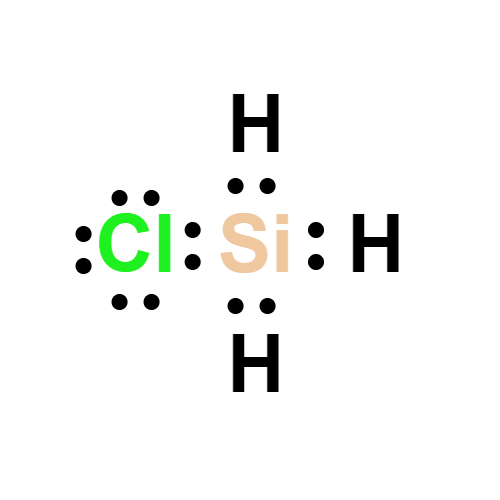CHLOROSILANE
- CAS No.
- 13465-78-6
- Chemical Name:
- CHLOROSILANE
- Synonyms
- SiH3Cl;chloro-silan;CHLOROSILANE;chlorosilicon;Silane, chloro-;Trihydridesilicon chloride;Silicon trihydride chloride;chlorosilanes,corrosive,n.o.s.;chlorosilanes,corrosive,flammable,n.o.s.;chlorosilanes,water-reactive,flammable,corrosive,n.o.s.
- CBNumber:
- CB9741883
- Molecular Formula:
- ClH3Si
Lewis structure

- Molecular Weight:
- 66.56
- MDL Number:
- MFCD07777018
- MOL File:
- 13465-78-6.mol
- MSDS File:
- SDS
| Melting point | -118°C |
|---|---|
| Boiling point | -30,4°C |
| Density | 1,145 g/cm3 |
| Flash point | -90°C (-133°F) |
| form | colorless gas |
| Specific Gravity | 1.145 |
| color | colorless |
| Hydrolytic Sensitivity | 10: reacts extremely rapidly with moisture and oxygen - may be pyrophoric - sealed system required |
| EPA Substance Registry System | Silane, chloro- (13465-78-6) |
SAFETY
Risk and Safety Statements
| Symbol(GHS) |     GHS02,GHS05,GHS04,GHS06 |
|---|---|
| Signal word | Danger |
| Hazard statements | H314-H220-H280-H330 |
| Precautionary statements | P410+P403-P260-P264-P280-P301+P330+P331-P303+P361+P353-P363-P304+P340-P310-P321-P305+P351+P338-P405-P501-P210-P377-P381-P403-P260-P271-P284-P304+P340-P310-P320-P403+P233-P405-P501 |
| TSCA | No |
CHLOROSILANE Chemical Properties,Uses,Production
Chemical Properties
colorless gas; enthalpy of vaporization 21kJ/mol; entropy of vaporization 82.8kJ/(mol·K) [CIC73] [CRC10]
General Description
Chlorosilanes are a class of liquids that range in color from clear colorless to light yellow colored. A clear to light yellow liquid. Slightly more dense than water. Contact may burn skin, eyes and mucous membranes. May be toxic by ingestion, inhalation, and skin absorption. Used to make other chemicals.
Air & Water Reactions
Highly flammable. Based on the properties of similar materials, there is the possibility that the reaction of CHLOROSILANE with water may be vigorous or violent. Products of the reaction include hydrogen chloride. The reaction generates heat and this heat may be sufficient to ignite the product. The chlorosilicon hydrides(ClxSiHy) are spontaneously flammable in air, NFPA 1991.
Reactivity Profile
Chlorosilanes are compounds in which silicon is bonded to from one to four chlorine atoms with other bonds to hydrogen and/or alkyl groups. Chlorosilanes react with water, moist air, or steam to produce heat and toxic, corrosive fumes of hydrogen chloride. They may also produce flammable gaseous H2. They can serve as chlorination agents. Chlorosilanes react vigorously with both organic and inorganic acids and with bases to generate toxic or flammable gases.
Health Hazard
Highly toxic: contact with water produces toxic gas, may be fatal if inhaled. Inhalation or contact with vapors, substance or decomposition products may cause severe injury or death. May produce corrosive solutions on contact with water. Fire will produce irritating, corrosive and/or toxic gases. Runoff from fire control may cause pollution.
Fire Hazard
Produce flammable and toxic gases on contact with water. May ignite on contact with water or moist air. Some react vigorously or explosively on contact with water. May be ignited by heat, sparks or flames. May re-ignite after fire is extinguished. Some are transported in highly flammable liquids. Containers may explode when heated. Runoff may create fire or explosion hazard.
Synthesis
In order to obtain SiHCl3 as the principal product, the best way is to react Si with HCl in the presence of copper. A porcelain boat is filled with finely powdered silicon, which has been purified by boiling with hydrochloric acid and dilute hydrofluoric acid. About 10% CuCl2 is mixed in with the silicon. The boat is placed in a Pyrex glass tube fitted with an adapter and a condenser, as described in the preparation of SiCl4. In this case, however, the end of the condenser should extend into the middle of the distilling flask. The apparatus is first carefully heated. Hydrogen chloride gas is produced from NaCl and HaSO4, without addition of hydrochloric acid, since it must be absolutely dry. The furnace around the tube which contains the boat is heated to 300°C and a slow stream of HCl is introduced. The receiver is cooled with acetone-Dry Ice mixture. Finally, the crude product is distilled directly from the receiver. The first fraction is HCl. The SiHCl3 comes over at 36.5°C. With a careful fractionation of the forerun, SiH3Cls may also be recovered. The yield of SiHCl3 is about 50%. In order to improve the yield of SiH3Cla, it is recommended that hydrogen be added to the HCl in the ratio of HS:HC1 = 4:1.
CHLOROSILANE Preparation Products And Raw materials
Raw materials
Preparation Products
| Supplier | Tel | Country | ProdList | Advantage | |
|---|---|---|---|---|---|
| Henan Tianfu Chemical Co.,Ltd. | +86-0371-55170693 +86-19937530512 | info@tianfuchem.com | China | 21673 | 55 |
| ATK CHEMICAL COMPANY LIMITED | +undefined-21-51877795 | ivan@atkchemical.com | China | 32760 | 60 |
| Win-Win Chemical CO., Limited | 0086-577-64498589 | sales@win-winchemical.com | CHINA | 998 | 58 |
| WinWin Chemical CO., Limited | +86-0577-64498589 +8615325081899 | sales@win-winchemical.com | China | 14197 | 58 |
| Dayang Chem (Hangzhou) Co.,Ltd. | 571-88938639 +8617705817739 | info@dycnchem.com | China | 52861 | 58 |
| ShanDong Look Chemical Co.,Ltd. | +8617653113219 | sales01@sdlookchemical.com | China | 2739 | 58 |
| PT CHEM GROUP LIMITED | +86-85511178 +86-85511178 | peter68@ptchemgroup.com | China | 35451 | 58 |
| GIHI CHEMICALS CO.,LIMITED | +8618058761490 | info@gihichemicals.com | China | 49999 | 58 |
| Meryer (Shanghai) Chemical Technology Co., Ltd. | 021-61259108 18621169109 | market03@meryer.com | China | 40240 | 62 |
| Suzhou Siso new material Co.,Ltd. | 0512-65402974 18550909935; | siso03@126.com | China | 1897 | 58 |
13465-78-6(CHLOROSILANE)Related Search:
1of4





